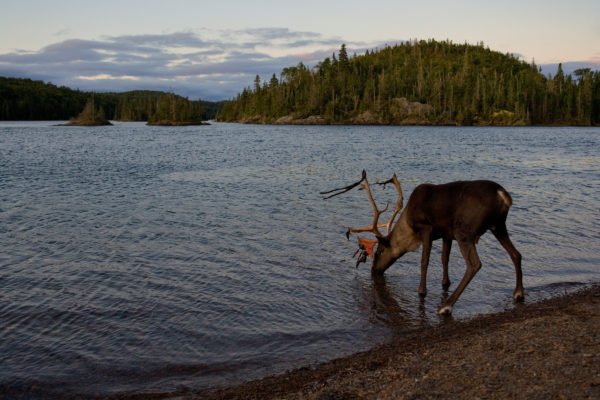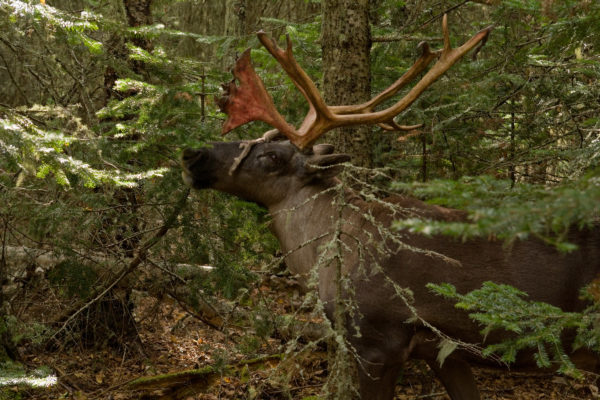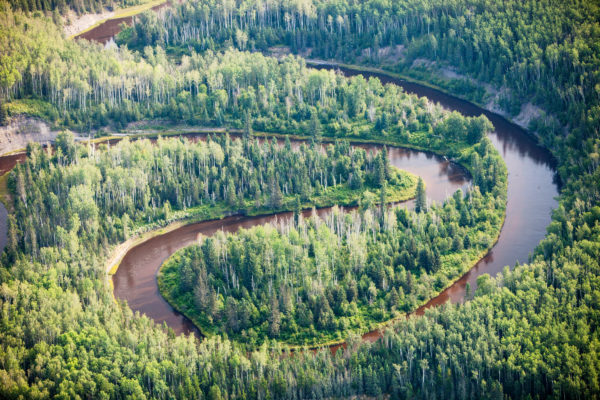As governments argue, at-risk woodland caribou decline
Canada’s woodland caribou are in trouble. They are falling through the cracks of our approach to protection and recovery of species at risk. Boreal populations of woodland caribou have decreased by more than 30 per cent over the last 20 years. More concerning: 73 per cent of herds are not self-sustaining, meaning they likely need conservation interventions, such as relocations, to build viable populations.
With a federal report on the protection of woodland caribou expected later this month, and growing provincial complaints about the costs of implementing required conservation actions, it is time for all parties to stop passing the buck and instead work collaboratively to protect critical habitat for this at-risk species
The continued declines of woodland caribou are illustrative of a systematic failure of our protection and recovery of at-risk species in Canada. WWF-Canada’s Living Planet Report Canada found an average decline of 28 per cent in populations of Canada’s federally designated species at risk for the period 2002 – 2014, a result that indicates significant ongoing declines for our most imperiled species, despite legal protections.
The boreal populations of woodland caribou were listed as Threatened under the federal Species at Risk Act (SARA) in 2003. An extensive consultation process followed for the creation of a recovery strategy that involved industry, Indigenous, provincial and territorial government representation – a process that was unprecedented for a species at risk in Canada and took nearly a decade to complete. The recovery strategy was released in 2012, four years past the legislated deadline.
Following this, provinces and territories were tasked with developing their own action plans, which, after five years, were due this past fall. These plans are to be assessed in a report later this month by Environment and Climate Change Canada to determine whether the prescribed actions are sufficient to protect the critical habitat woodland caribou need to thrive.
In the 15 years since being legally listed, boreal caribou numbers have continued to decline. Logging, mining and gas development have cleared large areas of intact forest or fragmented it through the construction of roads, seismic lines and hydro corridors, restricting the movement of caribou and making them easier prey for wolves.
At this point, the challenges faced by woodland caribou are abundantly clear. We know the barriers and we know the opportunities. Some might even say that we’ve studied the species nearly to death. Governments and industries have had more than a decade to develop plans to act. And yet, we’re hearing from Alberta’s environment minister Shannon Phillips and Quebec’s minister of forests, wildlife and parks Luc Blanchette that protecting caribou is not worth the cost. Similarly, Ontario’s Minister of natural resources and forestry Nathalie Des Rosiers has allowed exemptions of the forest industry from the Ontario Endangered Species Act to continue.
If we can’t work through these issues now, for one of the most iconic Canadian species, despite years of consultation and process, how can we expect to recover the other 620 wildlife species listed under SARA?
We don’t have to look far to see what is in store for boreal herds if governments and industries continue to defer actions: just this past weekend the Selkirk herd of southern mountain caribou was declared “functionally extinct” after the root causes of their decline wasn’t addressed.
The solutions for woodland caribou are right in front of us if governments, industries and communities work collectively to:
- Protect critical habitats.
- Sustainably manage industry projects in the boreal forest, including oil and gas, forestry and mining, to ensure stable or increasing caribou populations.
- Collaborate between communities and industries to create local plans and solutions.
- Use federal budget incentives as a carrot and protection orders as a stick to bolster regional protections.
Now is the time for action, not blame. Despite the population declines and government delays, we have an opportunity to act now, before the species becomes further imperiled and recovery becomes even less likely. There have been good examples of leadership from Indigenous communities, the Forest Stewardship Council of Canada, and non-governmental organizations such as Canadian Parks and Wilderness Society, Wildlands League, Wildlife Conservation Society, Alberta Wilderness Association and Ontario Nature that we can follow. And we can all play a role: the federal provincial and territorial governments, industries and communities.
We are at a critical juncture that requires us all to act.




